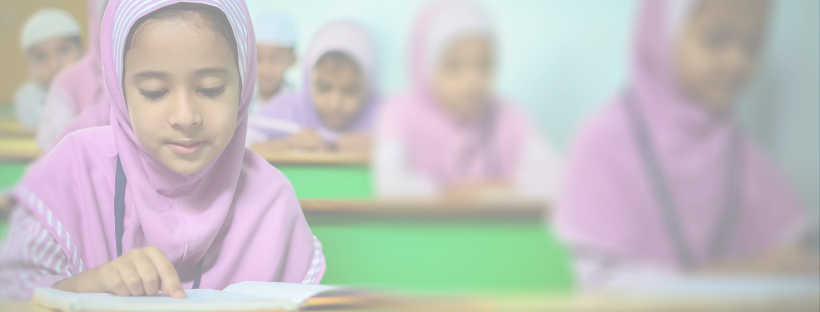The topic of women in Islam — their fashion, their values, their rights — is a source of constant fascination for people young and old alike. It’s likely that students will bring their own preconceived notions to the classroom, so it’s important to address this topic with sensitivity and kindness.
Click here for a guide on how to address difficult topics in the classroom, and find below a collection of resources for educators: articles, books, and infographics to inform how you teach about women in Islam; lesson plans and scripts to help plan your curriculum; and multimedia resources like novels, films, and podcasts to supplement your own lesson plans.
This resource guide is one in an ongoing series developed by MEPC staff and interns. New guides are published every two weeks, so send an email to mgeissler@mepc.org to be added to the list or to request a specific topic.
Recommended Topics to Discuss
- Veiling — who does it and why?
- Women’s rights in Muslim countries
- Marriage and divorce in Muslim countries
- Women in the Quran
- Women in Islamic history
Background Information
- Introduction to Women’s and Gender Roles in the Middle East from TeachMideast
- FAQ on the Islamic Veil and Women’s Dress from TeachMideast
- Factbox: Women’s Rights in the Arab World from Reuters
- Women in Muslim History from TeachMideast
- Gender-Inclusive Mosques from Ithaca College
- Women in the Middle East from the Institute for Policy Studies
- Global Connections: Roles of Women in the Middle East from PBS
- Muslim Women from the University of Georgia, a list of academic articles on women in Islam
Lesson Plans and Teaching Guides
- Who Wears a Veil? from PBS addresses visual stereotypes of Muslim women and looks at veiling across time and culture
- Muslim Women Through Time from PBS teaches students that no culture or religion stays the same through time, and dispels monolithic stereotypes of Muslim women
- How Many Wives? from PBS looks at how different historical eras have interpreted Muslim religious texts relating to gender, specifically polygyny
- American Women Writers of Muslim Heritage from the Center for Middle East Studies at the University of Arizona is a collection of short readings, writing prompts, and discussion questions designed to introduce students to Muslim writers
- Restoring Women to World Studies with a case study of The Arab World: Women and Feminism in the Arab Renaissance from the University of Texas at Austin looks at gender in Islam in the 20th century
Films & Documentaries
- He Named Me Malala this documentary tells the story of Malala Yousafzai, a Nobel Peace Prize-winning activist for women’s education in Pakistan (free on Netflix)
- Wadjda is a film about one girl in Saudi Arabia’s determination to own a bicycle, and more broadly about her experiences coming of age in a patriarchal society. It’s directed by Saudi Arabia’s first female filmmaker, Haifaa al-Mansour (for rent on Amazon Prime)
- Feminism Inshallah is a documentary about the largely unknown history of Arab and Islamic women’s rights movements across multiple Middle Eastern countries (available on Kanopy with a public library login)
- A Revolution in Four Seasons is a documentary following two women in post-Arab Spring Tunisia, one of them secular and progressive, one an Islamist, fighting for their visions of Tunisia’s future (free on Youtube)
YouTube Videos
- Teen Vogue: #AskAMuslimGirl Series
- TedTalk: What does the Quran really say about a Muslim woman’s hijab?
- Elle: Muslim Women Confront Common Stereotypes
- TedTalk: I’m Bored of Talking About Muslim Women
- RadioFreeEurope: Project Hijab: Why I Do – Or Don’t – Wear the Hijab
- Al Jazeera: Divorce in Lebanon
Books
- Nonfiction
- Do Muslim Women Need Saving? by Lila Abu-Lughod is a nonfiction exploration of the realities of Muslim womanhood and why Westerners think the way we do about Muslim women
- The Butterfly Mosque: A Young American Woman’s Journey to Love and Islam by G. Willow Wilson is a memoir recounting one American girl’s conversion to Islam and marriage to an Egyptian man, grappling with the politics of her new home and religion
- I Am Malala: How One Girl Stood Up for Education and Changed the World by Malala Yousafzai with Patricia McCormick tells the now-famous story of Malala’s attack by the Taliban and ensuing campaign for women’s education in Afghanistan
- And, a teaching guide from George Washington University
- Fiction
- First, “Save the Muslim Girl,” an article from Rethinking Schools, on how to recognize and address stereotypes in fiction about Muslim women
- The Girl in the Tangerine Scarf by Mohja Kahf is a novel about the journey of a teenage Syrian immigrant growing up Muslim in Indiana
- Does My Head Look Big in This? by Randa Abdel-Fattah is a funny, touching novel about friendship, growing up, and veiling through the eyes of a Muslim-Australian 11th grader
- Ms. Marvel by G. Willow Wilson for Marvel is a graphic novel about an ordinary Muslim American teen who unexpectedly receives extraordinary superpowers
- Madras on Rainy Days by Samina Ali tells the story of Layla, a second-generation Indian-American Muslim, attempting to reconcile her identities as independent American and good Muslim daughter as she travels to India for an arranged marriage
Podcasts
- This Muslim Girl – an Arab-American woman born in Yemen and raised in central California shares stories to empower young women of all faiths
- Salam, Girl! – hosted by two American converts to Islam, this podcast talks about the experience of conversion, their personal relationships with Islam, and what it means to Muslim in America today
- #GoodMuslimBadMuslim – two Muslim women discuss, satirically, the good and the bad of the American Muslim female experience (more here)


